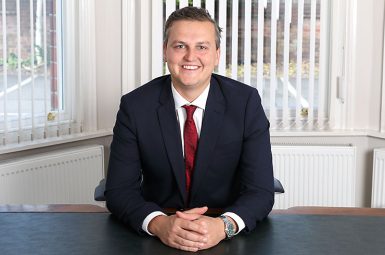Prostate Brachytherapy
Prostate brachytherapy is used to treat prostate cancer contained within the prostate gland by implanting tiny radioactive iodine seeds into the gland.
What is prostate brachytherapy?
Prostate brachytherapy is a way of using localised radiotherapy to treat prostate cancer that is contained within the prostate gland. The intended benefit is to cure the cancer.
The main alternative treatments for localised prostate cancer are:
- Active surveillance (a close monitoring programme);
- Radical prostatectomy (surgical removal of the prostate);
- Radical external beam radiotherapy (external x-ray treatment);
- Hormonal therapy (testosterone-reducing medication).
Data suggests brachytherapy to be as effective a cure as radical prostatectomy or external beam radiotherapy (EBRT) in men who are suitable for treatment.
During prostate brachytherapy radioactive iodine seeds are placed directly into the prostate gland.
The procedure is usually performed by a team of consultant urologist (responsible for mapping the prostate and accurate seed placement) a consultant oncologist (responsible for handling the radioactive seeds), and a medical physicist (responsible for real time dose calculations which are finely tuned with every seed that is inserted.
They can be positioned throughout the gland with a high degree of accuracy by using an ultrasound-probe, inserted into the rectum, to guide the procedure. A catheter (a plastic tube) is also inserted into the urethra (the passage through the penis and prostate that leads to the bladder) to ensure the images are as clear as possible.
Each seed (titanium casing).is about 5mm in length and Imm wide, approximately the size of a grain of rice. The radioactive source (Iodine125) is encapsulated within the seed casing.
Each seed irradiates only a very small area of the prostate but when combined together, they treat the entire prostate gland. The seeds stay in the gland permanently and give out gradually decreasing amounts of low level radiation.
Since only a small area is affected by the radiation of each seed, relatively little radiation reaches the other-healthy organs nearby. This helps keep side effects to a minimum.
Urinary side effects from brachytherapy can be troublesome and prolonged in a small number of men. Brachytherapy may not be suitable for men who already have severe difficulties passing urine because the treatment can make these-symptoms worse. The most common urinary side effects are: increased frequency, urgency, and difficulty passing urine, but these generally subside a few months following the implant.
Rectal side effects are generally well tolerated and short lived. These can include increased frequency and flatulence, and loose stools.
Impotence can sometimes be a problem, but there is a lower associated risk after brachytherapy than after radical prostatectomy, and about the same after EBRT.
As Iodine-125 gives off very low levels of radiation, safety precautions are minimal. Immediately after the implant it will be important to ensure close contact with children and pregnant women is kept to a minimum for two months. We generally advise that you can spend unlimited time with them, ensuring you are at least a sofa length away (0.5m). You will also be required to carry a Radionuclide Instruction Card for three years and bring it to the attention of any professional concerned with your care.
You will generally be suitable for brachytherapy if:
- The tumour feels confined to the-prostate gland-when felt by rectal examination;
- Your blood PSA (Prostate Specific Antigen) reading is less that 20ng/ml at the time of diagnosis;
- Your Gleason grade is 8 out of 10 or less.
With modern techniques even quite large prostates (up to 100cc) can be treated and we have published on this in the international literature:
The results of real-time brachytherapy for the management of low and intermediate risk prostate cancer in patients with prostate volumes up to 100ml
Nicola L. Dallas, Peter R. Malone, Adam Jones, Andrew J. Doggart, Kevin J. Conway, Paul B. Rogers. BJU Int 1012; 110:383-90
You should also not be suffering with severe urinary symptoms, such as a weak stream or difficulty in emptying your bladder, as brachytheraphy may make these symptoms worse.
Your urinary functions will be assessed with a (flow test and an International Prostate Symptom Score (IPSS) before a decision to undertake brachytherapy can be made.
In a small number of cases, a limited Trans-Urethral Resection of the Prostate (TURP) may be appropriate to enable you to receive a brachytherapy implant. This procedure ‘is used to remove prostate which makes it difficult to pass urine.
If there is a possibility that you wish to have children following brachytherapy, it is important to discuss this with your oncologist, prior to treatment, so that your fertility options can be discussed.
Combined therapy
Hormone therapy helps control prostate cancer by stopping the hormone testosterone from reaching the prostate cancer cells. It can be a treatment option for many men with prostate cancer, but it is used in different ways, depending on the stage of the cancer.
If there is a higher likelihood that your cancer could spread to tissues in close proximity to the gland, it may be suggested that a three month course of hormones is taken before and after the implant.
In a small number of higher risk cases it may also be suitable to combine brachytherapy with a course of hormonal therapy and EBRT. A five week course of EBRT will commence two months after the brachytherapy implant and allows a greater margin of tissue around the prostate gland to be treated.
Prostate Brachytherapy Procedure
The seeds are inserted under general anaesthetic (GA) and the procedure takes approximately 90 minutes. The number of seeds implanted depends on the size and shape of the prostate but usually between 40 and 80 seeds are used.
A urinary catheter is inserted while you are under the GA. This helps produce high quality ultrasound images of the entire prostate gland.
An ultrasound probe is inserted into the rectum and is used to guide the procedure. The seeds are inserted through fine needles, which means no cuts or incisions are required. The consultant inserts the needles through the perineum (the area between the scrotum and the anus) and into your prostate gland.
Once the procedure is complete the needles and catheter is generally removed the following morning, unless there is bleeding. Discharge from the hospital is normally the same or next day.
For approximately a week following the implant you may experience some of the following:
- Mild soreness, bruising and discolouration in the perineal area (between the scrotum and the anus);
- Burning sensation when passing urine;
- Increased urination frequency and urgency;
- Reduced urine flow.
If pain relief is required, an anti-inflammatory medicine such as lbuprofen is recommended or, alternatively, paracetamol is usually enough.
You may pass small amounts of blood in your urine, this is normal. Drinking plenty of water, approximately 2-3 litres per day helps to flush out the bladder and reduce any blood clots.
You will usually have a tablet prescribed for after the brachytherapy to help with passing urine. Usually this is Tamsulosin.
It will be important to ensure you take your Tamsulosin regularly throughout the peak of your treatment reactions. This will be at least 3 months. You can get a repeat prescription from your GP.
For the first two weeks afterwards you should not take part in any strenuous activity or heavy lifting, but after this you will probably be able to carry on as normal. You should also not go on a flight for four weeks following your implant.
You should also not ride a bicycle, motorbike or horse for two months following implant.
Urinary problems
Increased frequency and urgency of urination are the most common side effects. Your urine flow may be also slower than normal and can sometimes be painful. It will be important to ensure you take the Tamsulosin regularly.
Retention of urine
A small percentage of patients (1-2%) may develop acute urinary retention and require a catheter. Urine retention usually begins in the first few weeks after an implant, but can occasionally happen later. If a catheter is necessary, it usually needs to stay in place for up to six months.
Bowel problems
You may also feel constipated as a result of the swelling from the prostate. A high fibre diet and extra, fluids are encouraged. Sometimes a bowel softener may be required if your stools hard to pass (Lactulose, Movicol or Laxido). These should be prescribed by your GP.
If the rectum becomes inflamed (proctitis) and you experience a burning sensation after opening your bowels, an anti-inflammatory may be required. You should consult your GP.
Rarely, patients may pass some blood from their rectum. If bleeding persists it may require investigation.
Sexual activity
Impotence (inability to achieve satisfactory erections) occurs in 20 to 30% of patients under the age of 60.
As a general rule, if erections are good before the procedure, we would expect them to be achievable after. If the erections are on their last legs this could be the straw that breaks the camel’s back.
In a very small number of cases following brachytherapy, urethral narrowing can occur, making it difficult to pass urine. In cases that are unresponsive to Tamsulosin, it may be appropriate to perform a urethral dilation surgical procedure to improve difficult symptoms. This can occur in approximately 1% of patients who have brachytherapy.
Second malignancies (second primary cancers) are very rarer especially with prostate brachytherapy but should always be considered with treatments involving radiation.
Radiation safety is a concern for many patients. However, the seeds give off very low levels of radiation that only penetrate a few millimetres each, and the prostate will absorb most of this.
The strength of the radiation reduces gradually over time. “The level of radiation outside your body is not much greater than the level found in the normal environment.
Your implant poses. No significant risk to your family and friends. Although the seeds are radioactive, you are not. Objects that you touch or items that you use do not become radioactive.
All patients having brachytherapy will be given special instructions with regard to radiation safety.
Patients have a pelvis CT scan at 1 month to allow post implant dose measures to be calculated.
PSA is followed three monthly for the first year. 6 monthly for approximately the next 3 years, then annually.
The expectation is that PSA will fall to a very low level after treatment. There is an odd phenomenon called PSA bounce where the PSA can rise then fall after 12 to 18 months. This is nothing to worry about and is not a sign of anything sinister. However, if the PSA were to repeatedly rise and rise that would indicate a recurrence of the cancer.
Next Steps
Our Prostate Brachytherapy Specialists
Get fast access to leading specialists for the swift diagnosis and treatment of urological conditions in a private clinic environment.
If you would like more information or wish to arrange a consultation with one of our specialist consultant urological surgeons then please either Call 0118 920 7040 or complete the form below.
Insured patients
Contact your GP and ask for a referral to the Urology Partnership.
All consultations, investigations and treatments are covered by major insurance companies (depending on policy).
Funding your own treatment
Self-funding initial consultation fee is £205. Follow up fees are £165.
Consultation charges are exclusive of any tests and other investigations that the consultant may wish to carry out.


